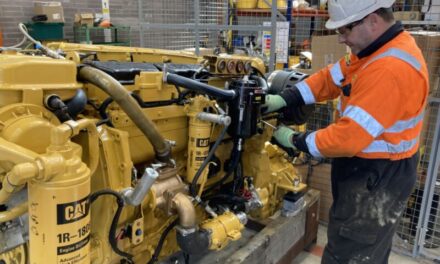 Stuart Hutchings, marketing manager with Elektron Technology’s Arcolectric brand, outlines why design engineers using electronic switches and accessories should ask for customised component parts.
Stuart Hutchings, marketing manager with Elektron Technology’s Arcolectric brand, outlines why design engineers using electronic switches and accessories should ask for customised component parts.
Traditionally, a design engineer would assess a component part on its functionality, cost and performance. The market’s strongest performers were cost efficient and durable ‘one size fits all’ switches and accessories.
This, however, is no longer the case. Design engineers have found their voice, and in order to create the next generation of electronic devices for industrial applications and consumer products, they are calling on component suppliers to meet their design challenges with customised component parts.
There are a number of scenarios where a design engineer may choose a customised component rather than an industry standard alternative:
Aesthetic design
In recent years, there has been a surge in demand for aesthetically pleasing component parts. This is partly due to the trend in consumer electronics markets for consistent branding and attractive, streamlined design, typical in domestic appliances and power tools. However, colour matching is also quite common in industrial testing and process equipment.
Customising for functionality
Component parts are often chosen on the basis of the characteristics of the finished product. For example, there has been a significant drive towards LED illumination over neon, as it has a potentially longer life cycle, leading to lower maintenance costs and decreased running costs. LED’s are also a more stable light source, and less likely to be damaged in transit or during assembly.
This, however, introduces new challenges, as light output and internal configuration must now be taken into consideration. Where mains rated versions are required, internal components are also required. LED is the preferred option where low maintenance is a key priority, but a design engineer may need to question if this is the key consideration depending on the end user application.
 Enhancing performance
Enhancing performance
Customisation applies to more than just the physical appearance of end user products. In fact, it can also be used to improve and enhance the performance of electrical equipment. For example, building a timing device into indicators means that we can not only show a set ‘status’, but can also proactively provide information to the user, such as sending a scheduled service alert to users when maintenance is required on the product.
There are also situations where design engineers request a change to the contact materials used for component parts to best suit the application. Silver, for example, can tarnish over time and exhibit high resistance, making gold contacts a preferable option for applications where currents are low and contact resistance becomes critical. For sensing circuits, this increase in resistance can result as a change in input, when it may just be the switch element causing the change. Choosing gold as the contact material will eliminate this type of issue.
Customising for the environment
Additional components and accessories can help a design engineer to create a product that is tailored to the end user environment. Connector blocks can be added to the rear of a switch for rapid termination, ease of cable harnessing and the elimination of incorrect wiring. This is particularly useful where harnesses are made outside the equipment, or where components are fitted after the equipment is wired, or where access is limited.
Accessories can also be used to enhance safety. Switch guards are often chosen as a cost effective solution for increased safety where protection is required from accidental switch operation, eliminating the need for special locking mechanisms.
In other instances, accessories are added to maintain integrity and performance is maintained where the end product is likely to be used in a harsh environment. Flexible switch covers provide greater ingress protection where dust or water is present in the external environment and could render a standard switch inoperable in a short period of time. Transparent covers allow the switch status to be available on illuminated or printed rocker versions.
An evolving mindset
There is an evolution happening in the mindset of engineers, and forward looking design engineers are no longer happy to compromise.
The trend towards customised design will thrive, as component suppliers continue to tailor components and equipment to new end users and industrial applications.
This is a win-win situation for both the design engineers and the component suppliers who have become an integral part of the design process. Together, these are driving new innovations and customisations, resulting in better products for the end user.

